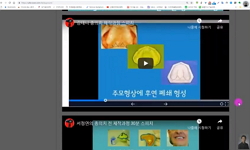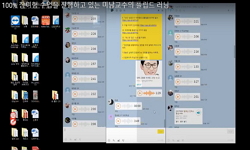Compared to the past, today's Korean art market has grown significantly in terms of quantity, with more than 10 million people visiting concert halls in a year. However, in reality, most of the audience is limited to a certain social class. The recent...
http://chineseinput.net/에서 pinyin(병음)방식으로 중국어를 변환할 수 있습니다.
변환된 중국어를 복사하여 사용하시면 됩니다.
- 中文 을 입력하시려면 zhongwen을 입력하시고 space를누르시면됩니다.
- 北京 을 입력하시려면 beijing을 입력하시고 space를 누르시면 됩니다.
https://www.riss.kr/link?id=A108390466
- 저자
- 발행기관
- 학술지명
- 권호사항
-
발행연도
2022
-
작성언어
-
-
주제어
사회 포용 ; 관객 개발 ; 접근 ; 참여 ; 예술교육 ; Social Inclusion ; Audience Development ; Access ; Participation ; Arts Education
-
KDC
300
-
등재정보
미등재
-
자료형태
학술저널
-
수록면
67-119(53쪽)
- DOI식별코드
- 제공처
-
0
상세조회 -
0
다운로드
부가정보
다국어 초록 (Multilingual Abstract)
However, in reality, most of the audience is limited to a certain social class.
The recent deepening social polarization, increase in economic inequality, disintegration of families, and conflicts due to the increase in migrants from various cultural backgrounds act as factors that hinder the solidarity and integration of our society. Countries establish and operate public performance venues by investing public resources to realize cultural democracy while providing arts to all citizens evenly regardless of class. However, publicly funded arts institutions often involve a small, well-educated public. Audience development has also been targeted primarily at current and potential audiences based on traditional marketing theories. However, this audience development does not lead to a change in the sustainable participation of those excluded from the social structure. Recognizing these issues, this study proposes approaches, participation, cultural diversity, and art education as a way to realize the demand for audience development from a socially inclusive perspective.
Compared to the past, today's Korean art market has grown significantly in terms of quantity, with more than 10 million people visiting concert halls in a year.
However, in reality, most of the audience is limited to a certain social class.
The recent deepening social polarization, increase in economic inequality, disintegration of families, and conflicts due to the increase in migrants from various cultural backgrounds act as factors that hinder the solidarity and integration of our society. Countries establish and operate public performance venues by investing public resources to realize cultural democracy while providing arts to all citizens evenly regardless of class. However, publicly funded arts institutions often involve a small, well-educated public. Audience development has also been targeted primarily at current and potential audiences based on traditional marketing theories. However, this audience development does not lead to a change in the sustainable participation of those excluded from the social structure. Recognizing these issues, this study proposes approaches, participation, cultural diversity, and art education as a way to realize the demand for audience development from a socially inclusive perspective.
동일학술지(권/호) 다른 논문
-
거리 예술을 통해 본 정치적 주체화: 제이알(JR)의 얼굴 사진 프로젝트를 중심으로
- 강원대학교 사회통합연구센터
- 양소연(So yeon Yang)
- 2022
- 미등재
-
- 강원대학교 사회통합연구센터
- 김문조(Mun Cho Kim)
- 2022
- 미등재
-
문화 콘텐츠를 이용한 지역재생사업의 방향 모색: 농촌 공동체 지역 활성화 사례 중심으로
- 강원대학교 사회통합연구센터
- 유지윤(Ji-Yoon Ryu)
- 2022
- 미등재




 스콜라
스콜라






